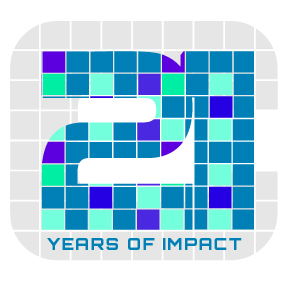AI in Compliance: Changing the Face of Adverse Media Investigations
Introduction
Modern compliance officers have available to them more information than ever before. Every day, countless articles, lists, reports, and documents are published worldwide. This proliferation of information has provided compliance officers with multiple ways of understanding customers, to establish the potential risks that they represent.
The sheer volume of information and the large number of potential sources of information do however present a significant challenge in the form of information overload. For compliance professionals, sifting through this sea of information can be daunting and time-consuming. Not to mention the time it takes to develop comprehensive reports and recommendations. As a result, the demand for tools that can swiftly sift through this mountain of information and produce appropriate inputs to reports has grown exponentially.
The answer? Artificial Intelligence (AI). Let's explore how AI is reshaping the landscape of understanding who the customer is.
Harnessing AI for Efficient Data Processing
AI has received a lot of attention in recent times, both good and bad. The fact that it is a technological marvel with the potential to revolutionize compliance research, cannot be overstressed. Advanced AI models can quickly study vast repositories of data, summarize articles, and provide precise answers to specific queries.
There are however many concerns with the use of the technology, of particular interest to compliance officers is the risk of false information being included in the output provided by the AI solution.
It is therefore important to note that no technological tool will ever be a silver bullet and should never be relied on in isolation. This is particularly important when using AI in the compliance process, and therefore how it is used should be coupled with a robust validation and review process. This furthermore implies that the development of the AI solution and its outputs should support this validation and review process.
Developing an AI Solution for Adverse Media Analysis
When we set out to develop the AI solution wrapped up in Rahn Monitor we early on established that the basis of the tool will be ChatGPT. There were however some key limitations to ChatGPT, one of which was that its training model was limited to data before September 2021. We therefore had to connect it to the internet which spawned a CustomGPT which we refer to as MonitorGPT.
For businesses and institutions looking for bespoke solutions, building upon ChatGPT's foundation through a CustomGPT is a way forward. By feeding MonitorGPT with specific contexts—in terms of proprietary corpus material—and converting this material into tokens, responses become highly tailored.
Moreover, integrating search engine capabilities and access to real-time data from media and social media platforms allows the AI to not just provide static answers but actively search, fact-check, and research the internet. The result? Instead of manual reading, AI offers distilled insights in mere seconds, bypassing the limitations of standard search engines and online AI tools.
The AI solution furthermore provides references and links to the information summarized in the output, thus supporting the validation and review processes required to ensure the accuracy of the information presented.
Document Analysis and Instant Responses
Modern AI, equipped with advanced document technology, can instantaneously scan, interpret, and answer questions based on complex documents, be it the State Capture report or intricate legal material.
While ChatGPT might not house this contemporary data, other AI bots with internet connectivity might shy away from providing answers due to the controversial nature of the query. However, a personalized AI tool, designed with uncensored access, can deliver accurate results without prejudice.
AI's Role in Transaction Monitoring
In the intricate world of financial transactions, AI's capabilities shine brightly. It can meticulously observe transactional trends, offering deep insights into patterns within transactional data. If there's an unusual spike or pattern that suggests money laundering, AI doesn't just notice it—it actively reports it.
Bonus: AI in the Financial Sector and Beyond
- Risk Assessment: AI models can predict potential risk factors in the financial services industry by analyzing market trends, ensuring safer and more informed decisions.
- Regulatory Compliance: By constantly updating its knowledge base, AI ensures that financial actions align with ever-evolving local and international regulations.
Conclusion
The integration of AI in compliance signifies more than just technological advancement; it represents a shift in how we approach, interpret, and act upon data. As we stand at this junction of information age and AI capabilities, harnessing these tools for compliance ensures not just efficiency but also accuracy, transparency, and forward-thinking decision-making. The future of compliance, it seems, is not just human or machine, but a symphony of both.
Written by Roche Pretorius, Financial crime compliance and Anti-Money Laundering Consultant and Ashlin Govindasamy from RAHN Consolidated
About RAHN Monitor
Rahn Monitor is a South African-built Sanctions Screening solution built on an up-to-date proprietary sanctions database covering all the major sanctions lists worldwide. With the development of our own internal database and screening capability, we eliminate the need for multiple subscriptions and reduce costs involved in sanctions screening substantially.
It features seamless integration into IT environments via API technology. The solution furthermore provides for notifications due to sanctions status changes and custom database capabilities which include whitelisting of accepted risks. The MonitorGPT Artificial Intelligence component provides compliance professionals with up-to-date Adverse Media reports that can be used in risk identification outside of the usual sanction datasets.

